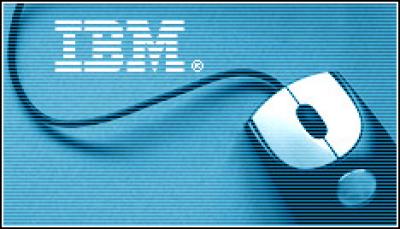Continued from page 4
The business of e-business
Microsoft saw Netscape’s delivery of a browser to access the Internet as a threat to its Windows monopoly and moved to blunt it by integrating its own Internet Explorer browser into Windows. In contrast, IBM viewed the browser as an opportunity to help organisations conduct business over the Internet.
IBM then coined the term “e-business” and laid out a vision for how e-business could transform the world. “We saw the world shifting toward the browser and had to find a way to articulate that to the world, so we came up with the term ‘e-business,’” said Craig Hayman, general manager of IBM industry solutions.
The company began a massive marketing campaign: In 1998, it spent $28.5 million (£17.4m) on Internet advertising. A year later, IBM had 10,000 e-business customers.
At the same time, IBM adopted open standards such as Java, created its WebSphere application server and adopted the Apache HTTP server.
With the success of WebSphere as a platform, IBM moved to adopt web services as an integration technology and service-oriented architecture as an architectural model. Web services enabled it to bring together the distinct worlds of Microsoft’s .NET with enterprise Java technology.
These moves set the stage for IBM’s new Smarter Commerce strategy, a better way for companies to buy, sell and market their products by integrating operations and enhancing interactions through community, collaboration, process and analytics, Hayman said.
Serious About Services
Services has become the biggest piece of the IBM pie, followed by software and systems. Kerrie Holley, IBM’s CTO for Global Business Services, said IBM’s services unit has been advancing the use of technology in business and government for decades, citing IBM’s support of early NASA missions as proof. But it wasn’t until IBM acquired PricewaterhouseCoopers (PwC) in 2002 for $3.9 billion (£2.4bn) that the company got serious about services.
Holley believes three key differentiators make IBM’s services organisation stand out: the arsenal of PwC talent, IBM’s deep research organisation and the company’s deep repository of assets, which he referred to as “Lego building blocks.” Holley said IBM “can bring thousands of Lego building blocks to the table” to address all manner of engagements. He added that IBM has more than 1,000 researchers focusing on services.
“IBM’s transition to customer focus and its strategic build-up of all three major segments of the tech industry — software, services and hardware — means that it is one of the companies able to provide end-to-end solutions in a unique way,” said Al Hilwa, an analyst with IDC. “No other player has achieved the scale that IBM has across these fronts in tech today.”
What is the foundation of IBM’s success? “I think if you look back at its earliest days, this adaptation aspect of the company and its culture is perhaps the most important thing you can say about IBM,” Mills said. “There are other hundred-year-old institutions where either their industries haven’t changed or they haven’t changed very much.
“IBM is at an all-time high value as a business, and that’s a reflection of change and adaptation. You have to have a learning organisation that’s open to change. You have to keep learning and building knowledge.
“I think that positions IBM very well, and we need to sustain that kind of learning culture to get through the next 100 years.”





